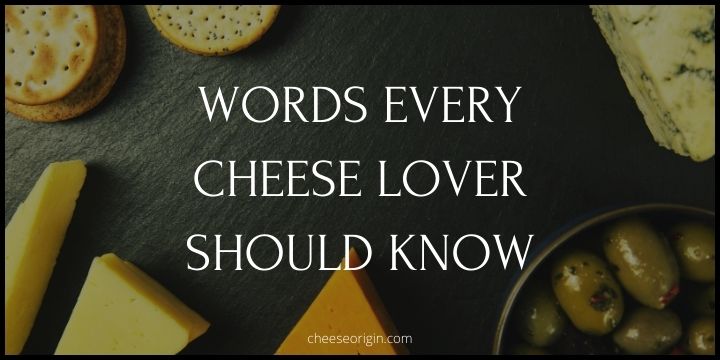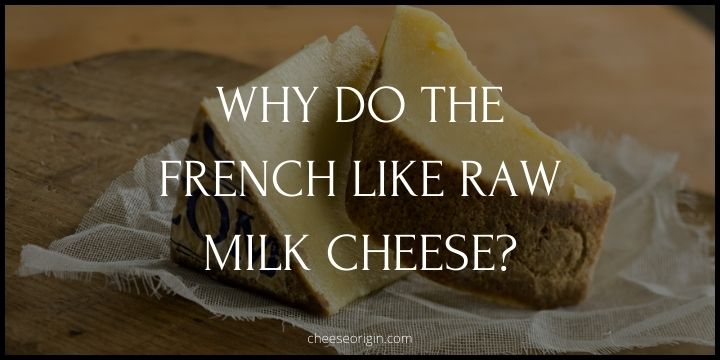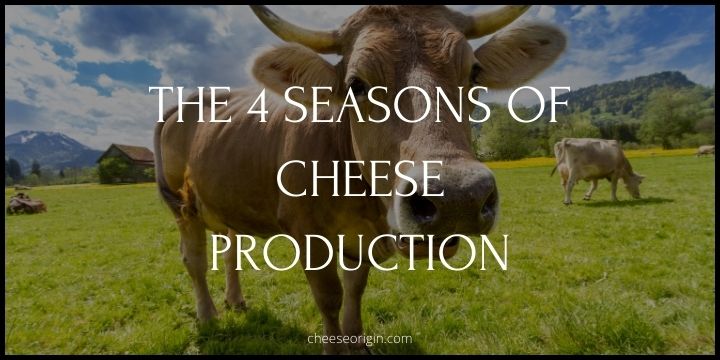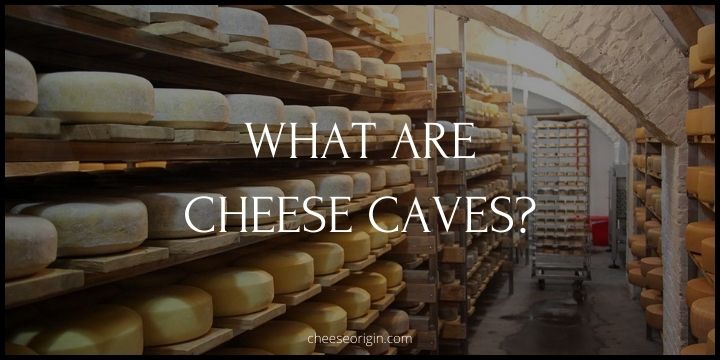42 Words Every Cheese Lover Should Know (TERMS)

Do you know that there’s such a thing as National Cheese Lover’s Day? It happens every 20th January when people leave their comfort zone by indulging in all different kinds of cheese.
I have my reasons to believe that this is one of the few occasions when folks go beyond the Cheddar.
If you are new to the World of Cheese then you have just learned something new. 20 January is a day to remember! Bookmark this page or write it in your notebook now.
But why stop learning here?
If you are a passionate cheese lover or have thoughts of becoming one then these 42 commonly used terms, words and phrases will help you become an overnight ‘cheese expert or connoisseur.’
Okay fine! You will become a tad more knowledgable compared to the average Joe.
You can do anything as long as you have the passion, the drive, the focus, and the support.
Sabrina Bryan
Also read: Goat Cheese vs. Cow Cheese (THE DIFFERENCES)
42 Words and Terms Every Cheese Lover Should Know
Affinage
Affinage is a French word that means refinement. In cheesemaking, this refers to the process of aging cheese to its ideal ripeness.
Artisan
Artisan is a word that describes cheeses that were produced using traditional methods by a skilled cheesemaker.
Bloomy rind
Bloomy rind is a category of cheese named for the way Penicillium candidum mold ‘blooms’ in snowy white tufts on the wheel’s surface. Camembert and Brie are good examples of Bloomy rind.
Casein
The primary protein found in milk that happened during cheesemaking. A slow-digesting protein that many people uses as a supplement to help reduce muscle breakdown.
Cheese cave
A cheese cave is a temperate-and-humidity controlled space for cheese storage. It is usually cool and highly humidified. An optimal environment for ripening.
Coagulation
Coagulation is the basis for processing liquid milk to solid. It is done by separating the protein and fat (solid) from the whey with lactose (liquid).
Commodity cheeses
Generic cheeses produced on an industrial scale, typically for long-term storage and/or processing.
Creamline
A soft, glistering layer that forms just under the rind or between the rind and the paste of bloomy-rind cheeses. This happens when the cheese ripens and proteins break down during aging.
Cultures
Cultures are commonly referred to as Probiotics. A cheese culture is a group of bacteria strains for making cheeses. Microbes that lower pH and textures in a cheese by converting lactose to lactic acid and breaking down proteins. This is also what gives cheese its unique flavor and taste.
Curd
Coagulated milk made in a sequential process called curdling.
Dairy
An establishment where cheese or butter is made or milk and cream products are sold.
Double/triple crème
Cheeses in which additional cream is added to the milk before coagulation begins.
Eyes
Eyes are the tiny holes you see in the paste (like in Swiss Emmental cheese). The eyes are caused by carbon dioxide gas that is produced by various species of bacteria in the cheese. A cheese without eyes is called a blind cheese.
Farmstead
Describes cheese made on the same farm where the milk was produced.
Fromagerie
An establishment where cheese is made.
Fruitière
A place where cheese is made and/or ripened in the Jura and in the Alps mountains.
Geotrichum
A Geotrichum is a genus of fungi and yeast responsible for the wrinkly (sort of brain-like) rinds on certain bloomy cheeses, such as Selles-sur-Cher, Valençay, and Bonne Bouche.
Hooping
Hooping is a process of draining whey from the curds and forming them into wheels, which gives cheeses their distinct shape.
Lactic
A term used to describe milk-like flavors in a cheese. It’s also used to describe soft-ripened or bloom-rind cheeses that are coagulated primarily with lactic acid produced by starter cultures and just a little rennet, such as Crottin de Chavignol and Sainte-Maure.
Lactic Acid
A by-product of starter cultures consuming lactose. Lactic acid is what gives fresh cheeses and yogurts their tangy flavor.
Lactose
A type of sugar found in milk that is converted into lactic acid during cheesemaking. People who are lactose intolerant are unable to fully digest this sugar. As a result, they have diarrhea, gas and/or bloating.
Molds
Microscopic fungi that grow on the rinds and cut surfaces of cheeses.
Morge
A term used in cheesemaking to describe a water solution of salt (and sometimes vinegar) and fermenting enzymes (yeast, fungi) used for the affinage of certain cheeses.
Native cultures
Naturally occurring microbes in the air, soil, or milk that the cheesemaker has captured from their unique environment. The cheesemaker cultures sample of milk from their favorite animals. The most vigorous sample becomes the grandmother culture, which is used to culture each batch made that season.
Paste
The portion of the cheese inside the rind.
Pasteurization
Pasteurization is a process of heating milk to eliminate potential pathogens and increase shelf life.
Protein content
The protein content of milk is fundamental to whether or not the milk can be used to make cheese.
Raw milk
Milk that has not been pasteurized; also used to describe cheese made with unpasteurized milk.
Rennet
Rennet are enzymes that are added to milk to help it coagulate into curd.
Rind
The other surface that develops on a wheel of aged cheese. Some cheeses, like block cheddar and fresh cheeses such as chèvre, are rindless.
Ripe
Describes a cheese that is ready-to-eat.
Ruminants
Ruminants are herbivorous plant-eating mammals such as cows, goats, sheeps, camels and water buffalos. They have four stomachs that chew their cud, or regurgitate food for further breakdown. Ruminants can digest vegetation that humans cannot, and the milk that many of them produce makes delicious cheese.
Surface ripened
This is to describe cheeses that ripen from the outside in, like the bloomy- and washed-rind cheeses.
Terroir
Terroir derived from the French word ‘earth’ or ‘soil’ (like how territory is derived from latin). It refers to the unique combination of characteristics possessed by a cheese made in a specific place.
Tomme
A generic term for a type of natural rind cheese typically made in the French and Swiss Alps but used as a template for cheeses around the world with a variety of different characteristics.
Turophile (or tyrophile)
Derived from the ancient Greek tyros, which means ‘cheese,’ a turophile is a lover or connoisseur of cheese (synonymous with caseophile).
Tyrosine
Tyrosine is an amino acid found in casein that sometimes creates crunchy crystals in long-aged cheeses such as Parmigiano-Reggiano.
Washed rind
This term is used to describe a cheese that’s been bathed in a salt brine in order to cultivate desirable microbes (and keep away bad ones) on its surface. These cheeses are also referred to as smear-ripened cheeses.
Wheel
An uncut cheese in its original form; typically refers to round cheeses but is also used to describe cheeses that are made in other shapes.
Whey
A popular supplement for many athletes. This is the protein-rich liquid by-product of cheesemaking, left over after the curds have been cut.
Yeast
A unicellular (i.e., containing only one cell) fungus that permits the fermentation of foods such as beer, wine, bread, and cheese.
Conclusion
We are forgetful beings and if you find the terms here a little overwhelming to digest at one sitting then consider bookmarking this page on your favorite browser for your own future reference.
Thanks for reading.
Check out our next post: The History of Cheese 101 (TIMELINE AND FACTS)
The terms and words from this posts were inspired by Stuff Every Cheese Lover Should Know by Alexandra Jones. It is a small book that I’d highly recommend every cheese lover and connoisseur to have.





